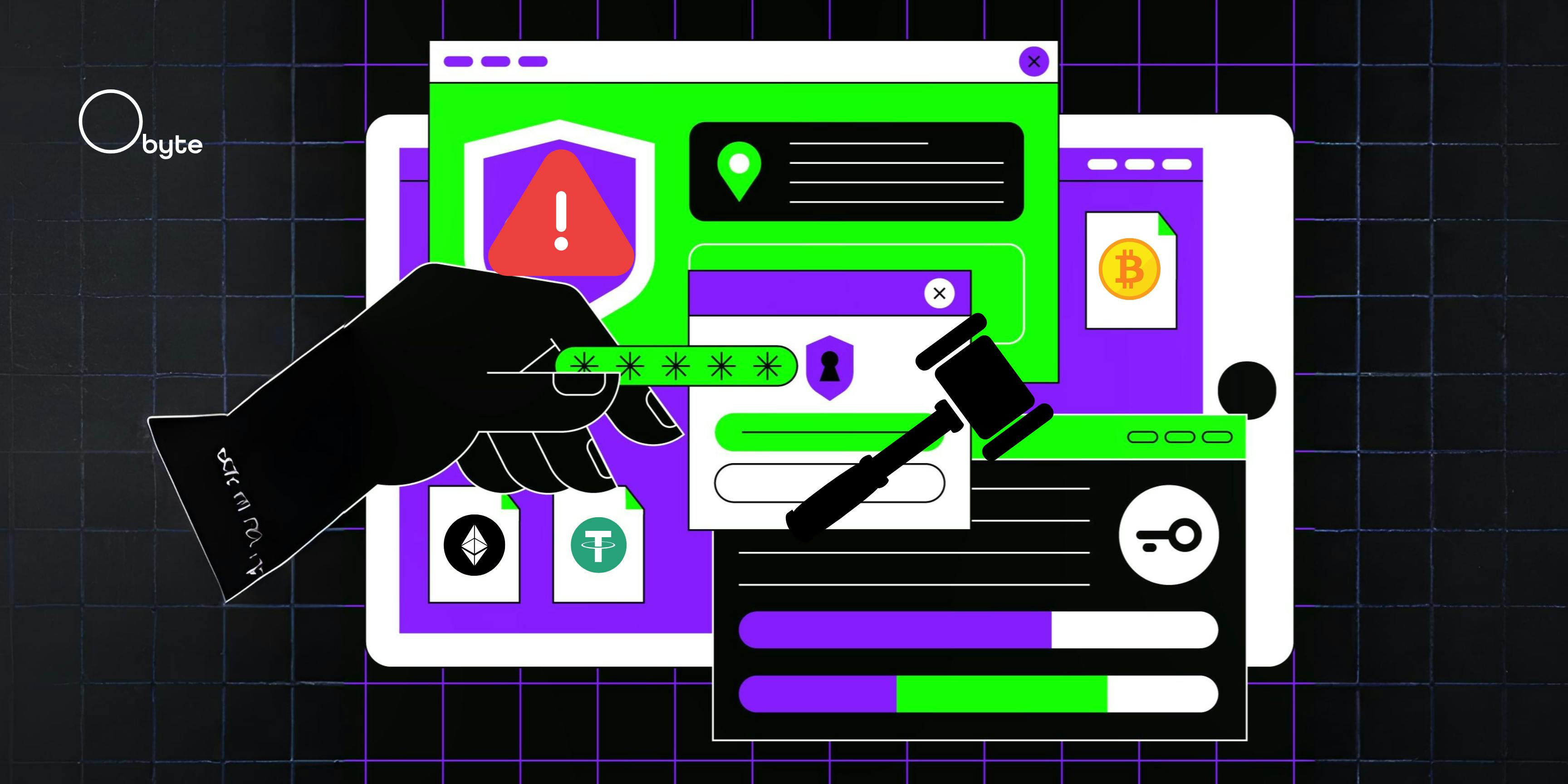In the world of cryptocurrencies, a “blacklist” usually means a list of addresses, accounts, or smart contracts that are banned from sending, receiving, or using tokens in centralized platforms —sometimes, even in some “decentralized” platforms, too. Governments and regulators use these lists to enforce financial laws, but they also raise hard questions about privacy and freedom in crypto. With pressure growing, many are asking: can truly decentralized systems survive blacklists?
Some distributed ledgers, like Ethereum, have had to walk a careful line between legal compliance and maintaining their open nature. Meanwhile, alternative networks like Obyte offer a different approach that could make censorship much harder. Let’s explore what’s happening, what’s at risk, and where things could go from here.
Blacklists and Ethereum — A Growing Challenge
Ethereum, the second-largest crypto network by market value, has faced several blacklist controversies. For example, after the U.S. sanctioned the privacy tool
These moves show how central players in crypto ecosystems—like token issuers—can control access. Although distributed ledgers and smart contracts are supposed to run without middlemen, outside events can force changes that break this ideal. Developers are left caught between building open platforms and following real-world laws. For users, the consequences are even clearer: your assets could become unusable overnight if they land on a blacklist. For instance, if you, as a US citizen, mixed some funds on Tornado Cash and authorities found out.
Censorship in crypto doesn’t just block a few bad actors—it can reshape entire networks. After Ethereum switched to proof-of-stake (PoS), “validators” became the new gatekeepers (replacing mining pools), and some started filtering transactions to avoid dealing with blacklisted addresses. Tools like MEV-boost made it easier for them to choose which transactions to include.
This behavior weakens the original promise of crypto neutrality. Instead of treating every user equally, censored networks prioritize compliance over fairness. If enough “validators” cooperate with regulators, blockchains could lose their independence and start resembling traditional financial systems. Over time, this could drive away users who once turned to crypto for freedom.
Crypto's Vulnerability: Custodians and Compliance
Even though crypto itself is designed to resist censorship to a degree, centralized players like exchanges and custodians are more vulnerable. Besides token issuers in blockchains, many firms
Major exchanges like Coinbase and Binance have enhanced
The tension between maintaining decentralization and complying with regulations is a delicate balancing act. While some projects strive to uphold the original ideals of financial autonomy, many large-scale operations prioritize business sustainability over ideology.
Alternative Approaches
At the very least, we can fix internal
This structure makes censorship much harder. Since no single group controls transaction approval, it’s almost impossible to blacklist an account or address globally. In a world where blacklists are spreading, architectures like Obyte’s could offer real alternatives.
However, even the most censorship-resistant systems face practical limits. Crypto projects still need
Obyte is better protected at the protocol level, but users still risk exposure when cashing out or connecting to external services. No system is completely immune because people still live under legal systems. Designing censorship resistance is essential, but managing the risks outside the network matters just as much. But hey, good news? Crypto bans are rarely effective, even when exchanging for fiat.
Why Bans Often Fail to Stop Crypto
Despite regulatory efforts, crypto use persists in countries with bans —and platforms with sanctions are still very much used. Chainalysis'
In nations like Bangladesh, Egypt, and Morocco, where crypto is officially forbidden, enforcement struggles to keep pace with user activity. Individuals continue to buy, sell, and trade cryptocurrencies, often using decentralized platforms or peer-to-peer (P2P) networks to evade restrictions.
This isn’t just a sense of rebellion. Economic instability plays a significant role. In places where local currencies are unstable, citizens turn to crypto to preserve their wealth. In Venezuela and Nigeria, for example, crypto provides an alternative to hyperinflation and tight government controls. The decentralized design of cryptocurrencies makes it nearly impossible for authorities to shut down networks entirely, even if individual users may face risks.
Bans often push crypto activity into underground markets, removing the protective layers that regulation could have provided. Instead of stopping usage, heavy-handed laws often make crypto ecosystems more opaque and harder to supervise.
How Decentralized Players Are Facing Restrictions
\Even as centralized players increasingly comply, decentralized systems remain resistant. Protocols without central authorities—like certain DeFi platforms and decentralized exchanges (DEXs)—cannot easily enforce blacklists or freeze funds. Without a governing body, these platforms continue operating globally, regardless of local bans.
Individual users have also been adapting creatively. Although Tornado Cash was sanctioned by the U.S. Treasury (until November 2024) and its domains and website were taken down, users still accessed it through decentralized interfaces
\Speaking of those legal hurdles, six users of Tornado Cash, backed financially by Coinbase, sued the U.S. Treasury Department after it sanctioned the mixer. In November 2024, the U.S. 5th Circuit Court of Appeals
On the other hand, data from the
Necessity drives innovation. In authoritarian regimes, citizens often use crypto to protect savings, send remittances abroad, or circumvent local banking restrictions. Bans, instead of halting crypto activity, push it further into decentralized, less traceable channels. Crypto’s foundational trait—censorship resistance—proves indispensable where freedom is under threat.
Toward a Freer Crypto Future
The rise of blacklists highlights a major tension in crypto: can these technologies stay open and neutral while fitting into the regulated world? Blockchains that allow easy censorship might survive in the short term, but they risk losing their core values —and users.
Systems like
As personal liberties continue to erode across the globe, users will likely, over time, gravitate toward more open and decentralized platforms. The future belongs to decentralization, as centralization has led to widespread surveillance, media manipulation, discrimination,
Featured Vector Image by pikisuperstar /
Originally Published on Binance Square


